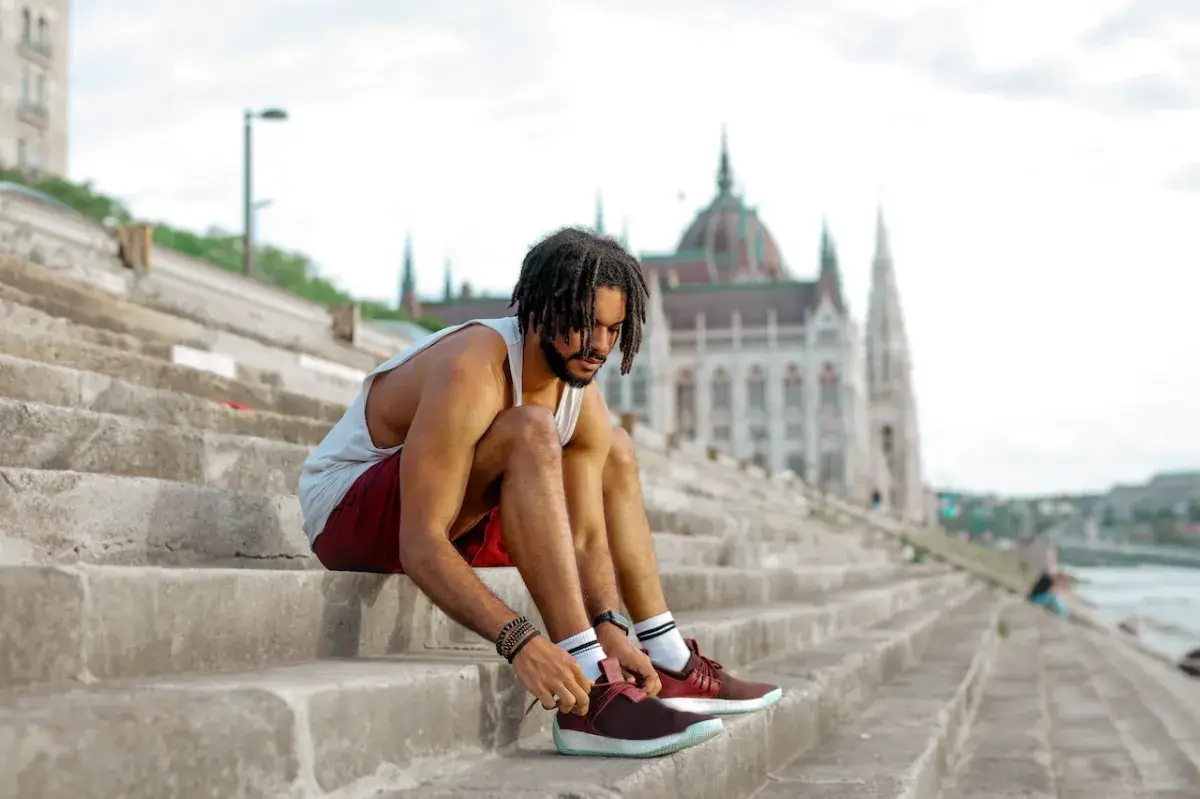How many miles is a 15k? This question often sparks curiosity. Welcome to the realm of the 15k distance – a thrilling challenge that demands physical prowess and mental determination. In this guide,
I will delve into the specifics of its 9.32-mile stretch, equip you with success strategies, and provide tailored training plans to ensure you conquer the 15k with confidence and pride. Whether you seek to improve your record or tackle this distance for the first time, this guide is your compass to triumph.
| Race Category | Distance (KM) | Distance (Miles) | Difficulty | Duration |
|---|---|---|---|---|
| 5K Run | 5 Km | 3.1 Miles | Beginner | 20 - 30 minutes |
| 10K Run | 10 Km | 6.2 Miles | Intermediate | 40 - 60 minutes |
| 15K Run | 15 Km | 9.3 Miles | Intermediate | 1.5 - 2 hours |
| Half-Marathon | 21.1 Km | 13.1 Miles | Intermediate | 1.5 - 2.5 hours |
| Full-Marathon | 42.2 Km | 26.2 Miles | Advanced | 3.5 - 5 hours |
| Ultra-Marathon | 50 Km + | 31 Miles + | Expert | 5+ hours |
How Many Miles Is A 15k?
A 15k race covers approximately 9.32 miles, offering a unique and exciting challenge for many advanced runners looking to push their boundaries and conquer a substantial endurance test.
Why 15K is an essential determinant of fitness level?
The 15k distance is significant in the running world due to its balanced blend of challenge and achievement. It serves as a stepping stone for runners who have mastered the 5k and 10k races and are looking to push their limits further. The 15k's 9.32 miles offer a new endurance level, bridging shorter distances and half marathons.
This distance demands dedicated training, fostering a sense of accomplishment upon completion. It's also an excellent opportunity for runners to improve their pace and learn valuable strategies that can be applied to longer races. Ultimately, the 15k is essential for its capacity to inspire growth and pave the way for more ambitious goals in a runner's journey.

How Many Miles is a 5k?
<a href="https://fitanalytica.com/blogs/fitness/how-many-miles-is-a-5k">When dealing with a 5k race or distance</a>, you're referring to a 5-kilometer distance. You can use the conversion factor of 0.621371 to convert kilometers to miles:
5 km * 0.621371 mi/km ≈ 3.106855 miles
So, to answer a common question, "How many miles is a 5k?" 5k is 3.1 miles around.
How Many Miles Is A 10k?
A 10-kilometer distance is equivalent to approximately 6.21371 miles. Considering the relationship between kilometers and miles, if you were to <a href="https://fitanalytica.com/blogs/fitness/how-many-miles-is-a-10k">run a 10k race, you would cover about 6.2 miles</a>.
Running 10K is not a half marathon. It is a wrong notion that people carry about a half marathon.
How many miles is a Half Marathon?
Many people have a goal to run a half marathon. So, <a href="https://fitanalytica.com/blogs/fitness/how-many-miles-is-a-half-marathon-free-training-plan">how many kilometers is a half marathon</a>? A half marathon is precisely 21.1 kilometers or 13.1 miles run. The distance of this race is quite popular and commonly used as a preparation step for runners training for a full marathon.
Many runners find a half marathon distance attractive as it demands endurance and less intense training than required for a full marathon. Nevertheless, it's still a considerable distance that necessitates proper training.
How Many Miles Is A Full Marathon?
A marathon covers a distance of 26.2 miles or 42.195 kilometers, making it one of the world's most iconic and challenging endurance races.
How many miles is an Ultramarathon?
An ultramarathon is any race or organized running event beyond the standard marathon distance of 26.2 miles (42.195 kilometers).
Ultramarathons can vary greatly, with typical distances ranging from 50 kilometers (31.07 miles) to 100 miles (160.93 kilometers) or more. There are even ultramarathons that go for multiple days and cover distances exceeding 200 miles.

Why are some races in kilometers and others in miles?
Choosing kilometers and miles for race distances often depends on the geographical region and local conventions. Most countries rely on the metric system that uses kilometers as the standard unit for measuring distances. Consequently, races held in these countries are measured in kilometers.
In contrast, countries like the United States and the United Kingdom use the imperial system with miles, leading to the measurement of races in these regions being measured in miles.
The choice of measurement is deeply rooted in historical, cultural, and geographical factors. However, regardless of the unit used, the thrill of participating and achieving personal goals remains a universal aspect of races worldwide.
History of Running Distances
The history of running distances is a fascinating journey reflecting practicality and tradition.
In ancient times, civilizations such as the Greeks and Romans used different measurement units to determine running distances. The Greeks introduced the "stade," a race spanned approximately 185 meters. This measurement later led to the creation of the modern 200-meter sprint.
During the 19th century, the British established the mile as a standardized measurement for distance running. It gained popularity due to its practicality and alignment with imperial units of measurement.
With the rise of track and field events, the International Amateur Athletic Federation (now World Athletics) was founded in 1912 to regulate athletics and set international standards for race distances. The metric system was officially adopted, introducing distances like the 100m, 200m, 400m, 800m, and 1500m races.
Longer distances saw the emergence of marathons, inspired by the legendary run of the Greek soldier Pheidippides from Marathon to Athens. The world record for marathon distance was 26.2 miles during the 1908 London Olympics.

Can you run 15 km without training?
Attempting to run 15 km without training is challenging unless you are an intermediate runner. Here are my reasons:
- Injury Risk: Without proper training, the risk of injuries like strains, joint pain, and overuse injuries increases significantly.
- Physical Strain: Running 15 km strains the body. Training prepares the body for the endurance and physical demands of such distances.
- Mental Stamina: Endurance running requires mental preparation and stamina. Training helps develop the mental fortitude needed to overcome challenges.
- Discomfort: Without training, discomfort such as blisters, chafing, and fatigue is more likely to occur during the run.
- Diminished Enjoyment: Running without preparation can turn the experience into a struggle, potentially diminishing the joy of running.
- Gradual Buildup: Training plans gradually increase mileage, allowing the body to adapt and reducing the risk of injury.
- Structured Approach: Training plans provide pacing strategies, rest days, and recovery techniques for a more balanced and enjoyable experience.
Considering these factors, proper training is crucial for a safe, comfortable, and fulfilling 15 km running experience.
How do I train for a 15k?
Training for a 15k involves a well-rounded approach that balances endurance, speed, and mental preparation. Here's how I approach it:
- Setting Personal Goals: I start by defining my goals, whether completing the 15k or achieving a specific time. Having a clear target keeps me motivated throughout the training process.
- Structured Training Plan: I create a structured plan that gradually increases my mileage over several weeks. This gradual buildup minimizes the risk of injury and allows my body to adapt progressively.
- Long Runs for Endurance: Long runs are a cornerstone of my training. I extend the distance of these runs each week, simulating the race distance and building my endurance.
- Variety in Workouts: I mix speed work, including intervals and tempo runs, to enhance my pace and cardiovascular fitness. These workouts also keep my training engaging and challenging.
- Rest and Recovery: Rest days are vital. I ensure I have proper recovery time to prevent burnout and injuries. Quality sleep and proper nutrition are non-negotiable for me.
- Cross-Training: I complement my running with cross-training activities like cycling or swimming. This prevents overuse injuries and maintains a well-rounded fitness level.
- Race Pace Practice: I practice running at my goal race pace during training to get accustomed to the pace I want to maintain on race day.
- Mental Conditioning: I emphasize mental preparation through visualization, positive self-talk, and mindfulness. A strong mindset helps me overcome challenges during the race.
- Nutrition and Hydration: Proper fueling and hydration are essential. I focus on balanced meals, especially before long runs, and practice my race-day nutrition strategy during training.
- Tapering: As the race approaches, I reduce training intensity to allow my body to recover and feel fresh on race day.
- Test Race Strategy: I simulate race conditions during training to fine-tune my pacing and fueling strategy.
Ultimately, training for a 15k is a journey that requires dedication and consistency. My approach is about finding the right balance, challenging myself, and enjoying the process as I work toward conquering the distance.

How Do You Know You Are Ready for a 15K?
Knowing you're ready for a 15k involves a mix of physical readiness, mental preparation, and training milestones. Here are some signs that indicate you're prepared to conquer the 9.32-mile challenge:
- Comfortable 10k Performance: Completing a 10k race or comfortably covering that distance in training is an excellent running pace and a positive indicator of your readiness for a 15k.
- Consistent Training: If you've consistently followed a training plan and gradually increased your mileage, your body is more likely to be prepared for the additional distance.
- Long Run Success: Running longer distances in your training without excessive fatigue indicates that your endurance is progressing well.
- Recovery After Workouts: If your body recovers well after challenging workouts and long runs, you have developed the necessary stamina.
- Mental Confidence: Feeling mentally confident about taking on the 15k is crucial. Believing in your capabilities can significantly contribute to a successful race.
- Training Variety: Incorporating different types of runs (intervals, tempo, long runs) in your training helps develop the overall fitness needed for a 15k.
- Injury Prevention: Being free of significant injuries and practicing reasonable injury prevention measures is essential for taking longer distances.
- Supportive Nutrition and Rest: Proper nutrition and adequate rest are crucial. You're in a good place if you've been fueling your body well and prioritizing recovery.
Remember that completing a 15k is about progress, not perfection. If you meet these criteria and feel excited about the challenge, you're prepared to tackle the 15k distance with confidence and determination.
Is cross training necessary for a 15K run?
These are the crucial aspects that emphasize the significance of cross training in my preparation for the 15k run:
- Preventing Injuries: Cross training helps avoid overuse injuries by reducing strain on specific running muscles and joints.
- Diverse Movements: Engaging in activities like swimming, cycling, and strength training introduces various movements, preventing muscle imbalances.
- Enhanced Cardiovascular Fitness: Cross training activities contribute to improved overall cardiovascular endurance.
- Mental Refreshment: Taking breaks from running through cross training sessions prevents burnout and keeps me mentally engaged.
- Muscle Strength and Balance: Strength training and other activities improve muscle strength, balance, and flexibility, enhancing running form.
- Active Recovery: Cross training provides active rest-day recovery, promoting blood circulation and muscle healing.
- Time Efficiency: Short, intense cross training sessions can offer cardiovascular benefits in less time than running workouts.
Cross training complements my running regimen, aiding in injury prevention, overall fitness, and mental rejuvenation as I prepare for the 15k run.
I've Never Run Before, Which Distance Should I Start With?
As someone who has never run before, choosing the proper distance to start with is a crucial decision. Beginning with a distance that matches your current fitness level and gradually building from there is vital. Here's my advice:
- Start Short: Begin with very short distances, such as a 1-mile walk or a 2-kilometer run, to allow your body to adapt to the new activity.
- Time Over Distance: Focus on running for a set amount of time rather than a specific distance. Begin with short intervals and gradually increase your running time.
- Couch to 5k Program: Consider following a structured program like "Couch to 5k" that gradually builds your running endurance over several weeks.
- Listen to Your Body: Pay attention to how your body responds. If you're comfortable with shorter distances, gradually extend them. If you experience discomfort, adjust your pace or take breaks.
- Consult a Professional: Before starting a running routine, it is necessary to consult with a healthcare professional if you have any medical conditions.
Starting with short distances and gradually progressing is the key to a successful and injury-free introduction to running. 15K is for intermediate runners and advanced runners. Therefore, start training early for longer distances, especially for non runners and new runners.

What Makes These Race Different Apart from Distance?
Apart from the apparent difference in distance, race distances offer unique experiences and challenges for runners:
5k (3.1 miles):
- Speed and Intensity: The shorter distance encourages a faster pace, making it an intense and exhilarating sprint for many.
- Beginner-Friendly: Approachable for beginners, providing a great starting point to enter the world of racing.
- Training Focus: Training often emphasizes speed work and intervals to improve race pace.
10k (6.2 miles):
- Balanced Challenge: Strikes a balance between speed and endurance, requiring stamina and pace control.
- Transition Distance: Popular choice for those stepping up from 5ks to longer distances.
- Training Variety: Training includes speed work, tempo runs, and longer endurance runs.
15k (9.3 miles):
- Endurance Test: Demands more endurance and mental resilience due to the extended distance.
- Intermediate Step: Often chosen by experienced runners progressing from 10ks to half marathons.
- Training Depth: Training incorporates longer runs that build endurance and pacing strategies.
Marathon (26.2 miles):
- Legendary Challenge: The marathon distance holds historical significance, tracing the ancient Greek story of Pheidippides' run from Marathon to Athens. It's a symbol of human endurance.
- Mainstream Endurance Goal: Completing a marathon is significant for many recreational runners. It requires rigorous training, mental strength, and strategic pacing.
- Training Emphasis: Training involves long runs, tempo runs, speed work, and a meticulous focus on fueling and recovery.
- Race Experience: Marathons are celebrated events that draw participants worldwide. The atmosphere, spectators, and camaraderie make it a memorable experience.
Ultramarathon (Any distance beyond a marathon):
- Extreme Challenge: Ultramarathons challenge the limits of human endurance, with distances ranging from 50k to 100 miles or more.
- Varied Terrain: Ultramarathons can occur on trails, mountains, deserts, or road courses, offering unique challenges depending on the terrain.
- Mental Fortitude: Beyond physical fitness, ultramarathons demand mental resilience to overcome fatigue, self-doubt, and the sheer duration of the race.
- Training Depth: Training for ultramarathons involves longer long runs, back-to-back training days, and mental preparation for the extended effort.
- Close-Knit Community: The ultrarunning community is known for being supportive and inclusive. Ultramarathons often emphasize personal achievement over competition.
